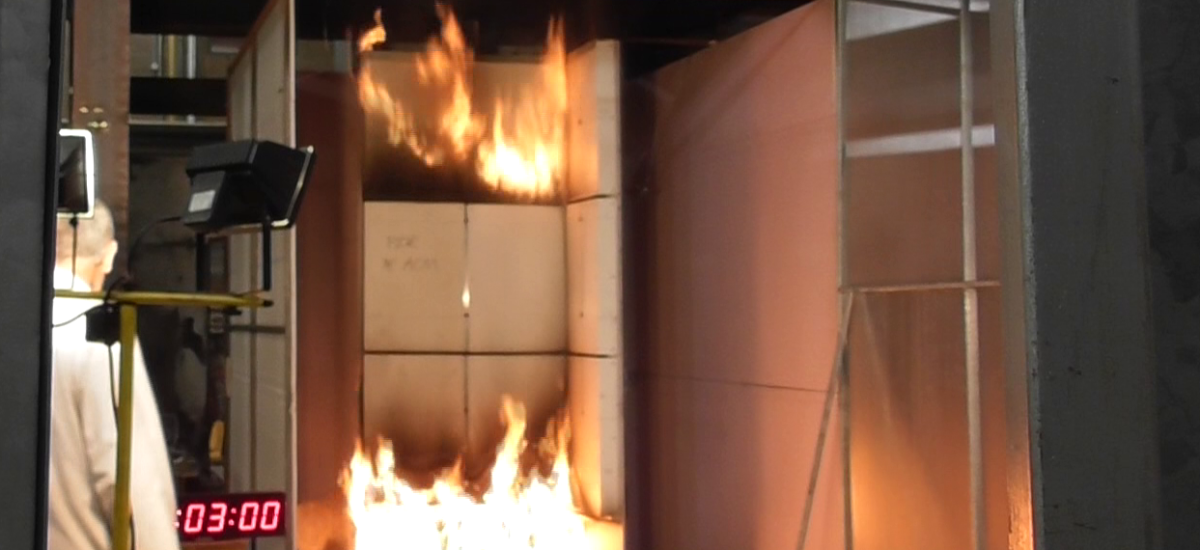2/3/2018
After the Grenfell disaster, fire behaviour of external walls has been a topic of great interest. Nevertheless, understanding such external wall fires is very complex as it is a combination between various products (insulant, cladding, cavity barriers) and system parameters (mounting and fixing, singularities such as window frames). It can be properly assessed only with fire tests of the complex systems on a sufficiently large scale.
In autumn 2017, Kingspan, one of European leaders of insulation products, requested Efectis to perform a series of external wall build-up tests according to ISO 13785-1 with additional heat release rate and toxic gas measurements. The test method is a one-third scale of the BS 8414-1 test. Heat release rate and toxic gas analysis give an important added value to the test method.
Tests performed cover different combinations of insulants and Aluminum-Composite Materials (ACMs) outer cladding. Nine tests were performed, combining three grades of ACM and three insulants (Kingspan Kooltherm K15 foam, polyisocyanurate foam and mineral wool). Mounting and fixing were very similar to those used in UK Government BS8414 tests performed at BRE, with cavity barriers and 50 mm cavity. Unlike the BRE tests, the tests on the ACM PE were not extinguished, thus giving results in the fire growth, the fire intensity and the decay stage of the fire.
The tests with the two best grades of ACM (ACM A2, deemed to be of limited combustibility, and ACM FR, deemed to be flame-retarded) present very similar results on fire propagation and heat release whichever of the three mentioned insulants were used. Toxic gas analysis highlighted CO and CO2 as the main gases released by combustion of the cladding, representative of well-ventilated combustion. The amounts of other toxic species released were insignificant. However, all the three tests performed with ACM PE outer cladding (the worst grade) gave very intense and brief combustion. For these tests, the ACM PE burns quickly and the integrity of the cavity is not assured, meaning that the cavity barrier has no effect. The combustion of the ACM PE is so fast that the contribution of the insulants remains negligible. Thus, very similar results were observed whatever the insulant was. Combustion products are mainly those from well-ventilated combustion of cladding, with a lot of unburnt hydrocarbons in addition to CO and CO2.
These tests confirmed the very important contribution of the ACM PE to fast flame propagation and intense fire observed during the Grenfell disaster, and the importance of evaluating external walls properly as a whole system in appropriate scale tests. They confirm the UK Government BS8414 tests performed at BRE, but present an additional quantitative gas and heat release analysis.
For more information: Eric Guillaume – eric.guillaume@efectis.com

